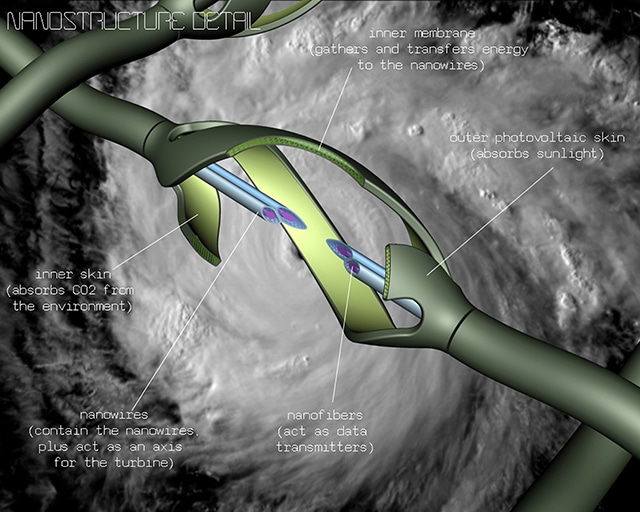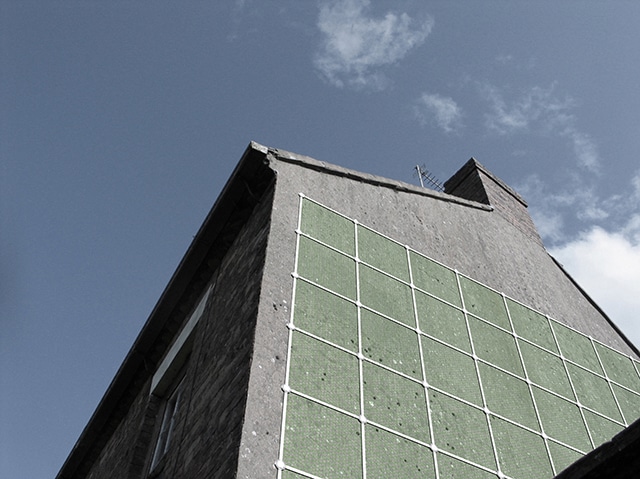Image Credit: NOS Design
When we think of turbines, we automatically think of those impressive structures reaching 400 feet in height topped by huge blades spinning endlessly on a vast expanse of flat grassland.
When Agustin Otegui thinks of turbines, he sees something much smaller, a microscopic turbine, in fact.
The Stuff of Science Fiction
Otegui's concept for providing green power to homes, tunnels or commercial buildings is based on nanotechnology. To understand his Nano Vent-Skin Micro-Turbine concept, a rudimentary understanding of nanotechnology is necessary.
Nanotechnology deals with the manipulation of entities on the smallest scale imaginable, primarily the atomic and molecular levels. In fact, it's hard for most people (except Agustin Otegui) to think logically about the sizes used in nanotechnology. For example, one inch contains 25,400,000 nanometers. Or, if you are used to measuring with meters, one billionth of a meter is equal to one nanometer.

Image Credit: NOS Design
Incorporating nanotechnology into his cutting-edge concept of "micro-turbines", Otegui states that he thinks it is possible to "merge different kinds of microorganisms that work together to absorb and transform natural energy from the environment. What develops from this merging ...is a skin that transforms...sunlight and wind into energy".
Otegui further explains that the outside of a structure would utilize the organic photovoltaic skin of his invention by absorbing UV rays and transferring this energy to nanofibers inside nanowires. Once contained in the nanowires, the energy would then be delivered to storage units existing within each panel.
Image Credit: NOS Design
Tiny Turbines, Organic Skins Powering Homes
In a CNN article by technology reporter Matthew Knight, Otegui discusses his vision of turbine blades integrated into the Nano Vent-Skin that are approximately 25 mm in length and only 10 mm wide. In addition, these turbines will be able to absorb carbon dioxide and each turbine potentially capable of producing .2 watts of energy. That translates into 90 watts of power per square meter grid of turbines, if Otegui's calculations are correct.
The Nano Vent-Skin covering a building would not only be completly green, i.e., no emissions and wholly sustainable, but also use "polarized organisms" that generate energy upon initiating chemical reactions every time a micro (nano) turbine makes contact with a building's exterior.
Just Like Human Skin?
According to NOS Design Consulting, NVS reacts like human skin when damage occurs to the skin, only its not the human immune system that comes to the rescue. Instead, "when a turbine fails, a signal will be sent through nanowires to a central system and microorganisms (building material) is delivered through the central tube so that regeneration occurs in the failed area using a process of self-assembly".

Image Credit: NOS Design
Perhaps in the near the future, we won't be throwing a coat of paint on a home, we'll be wrapping it in a sustainable skin-like cloak of energy-producing microturbines complemented by the wind, the sun and the fantastic concepts made all-too-real by the hard science of nanotechnology and the ingenious mind of inventer extraordinaire Agustin Otegui.
Further Reading
What is Nanotechnology?
Nano Vent-Skin - small scale green energy
Organic by Design